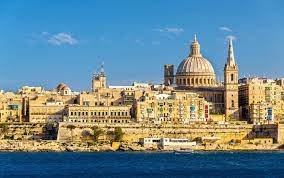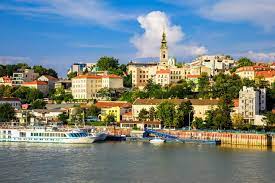Facts About Maldives
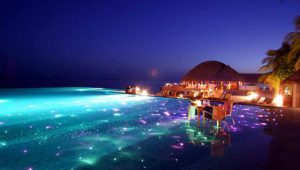 Maldives Islands are characterized by a unique coral nature and thus they posses unique tourism resources though in a one-sided way, namely in the submarine and littoral environment of the islands, lagoons and reefs, associated with the year-round tropical climate. These small, picturesque islands with dense tropical vegetation including shrubs, flowering plants and tall coconut palms surrounded by blindingly white beaches, crystalline lagoons that exhibit all shades of blue is the combination that has acclaimed Maldives as paradise on Earth.
Maldives Islands are characterized by a unique coral nature and thus they posses unique tourism resources though in a one-sided way, namely in the submarine and littoral environment of the islands, lagoons and reefs, associated with the year-round tropical climate. These small, picturesque islands with dense tropical vegetation including shrubs, flowering plants and tall coconut palms surrounded by blindingly white beaches, crystalline lagoons that exhibit all shades of blue is the combination that has acclaimed Maldives as paradise on Earth.
Tourism in Maldives which was introduced in 1972 has successfully developed in the past years. Maldives tourism has been rapidly growing the number of tourist arrivals and resorts islands over the last ten year period.
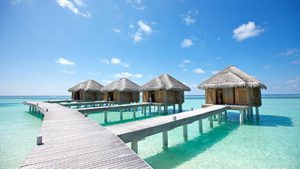 On the European market, Maldives today rank among the most attractive travel destinations in the tropics. Maldives offers large natural resources for tourism and encourages eco-tourism to protect the sensitive environment and underwater life.
On the European market, Maldives today rank among the most attractive travel destinations in the tropics. Maldives offers large natural resources for tourism and encourages eco-tourism to protect the sensitive environment and underwater life.
It is not only divers and snorkelers who enjoy the profuse underwater resources, but also beach tourists are attracted by the nature of the beaches and the climatic conditions as well. This environment really guarantees relaxation and recreation.
The Maldives is an archipelago of numerous small islands located in the Indian Ocean in an Equatorial position to the southwest of India. Hailed as an idyllic tropical haven, this secluded island formation 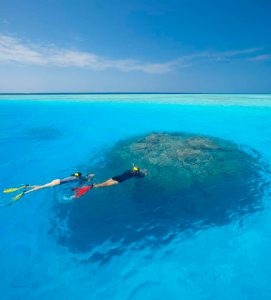 has in recent years established a reputation as a delightful holiday and honeymoon destination attracting leisure travellers, families and newlyweds from different parts of the world.
has in recent years established a reputation as a delightful holiday and honeymoon destination attracting leisure travellers, families and newlyweds from different parts of the world.
The 26 Maldives atolls are scattered across an expanse of about 90,000 square kilometres, making the island nation one of the most geographically expansive nations in the world. However the islets numbering 1,192 in total constitute only a tiny proportion of this immense extent of ocean. The Maldives islands have the distinction of being Asia’s smallest nation in both land area and population.
The largest city and the capital of the Maldives, Malé is situated on North Malé atoll. This particular islet has the distinction of formerly having been the location of the palace of the rulers of the Maldives, and was known as the King’s Island.
The indigenous people of the Maldives are thought to be descended from different groups of ethnicities who migrated to the islands in ancient times. These include settlers from the shores of southern India and western Sri Lanka as well as some migrants from more northern regions of India. The language of the Maldivians is Dhivehi and the predominant religion is Islam.
Traditionally the economy of the Maldivians has been fishing and even today the majority of the population is engaged in this pursuit. Today tourism is a huge source of income for the Maldives, with the islands’ lovely beaches,
shimmering sapphire waters and delightful climate attracting a steady influx of visitors from abroad. The Maldives have now become a sought after holiday and honeymoon destination, with various luxury hotels and resorts found on the islands. From the sky, the Maldives Islands appear like an emerald’s necklace set on navy blue background.


